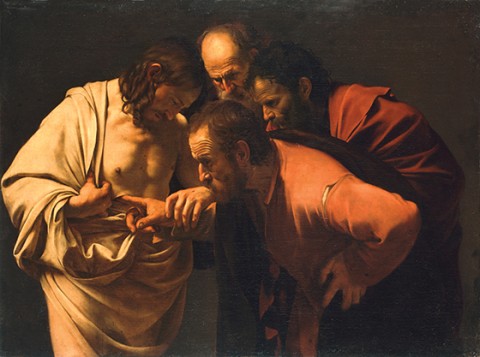Doubting Thomas, by Caravaggio (Michelangelo Merisi da, 1571–1610)

Caravaggio’s painting depicts the story of the apostle’s incredulity the way most of us remember it, but not exactly the way it is presented in John 20:27–28. In the narrative Jesus invites Thomas to “put your finger here and see my hands. Reach out your hand and put it in my side. Do not doubt but believe.” But the narrator does not state that Thomas actually did what Christ invited him to do; rather, Thomas responds with a confession: “My Lord and my God!” Caravaggio, however, graphically displays Thomas’s forefinger entering the gash in Christ’s side. Christ guides Thomas’s fingers into the wound with his left hand, while his right hand pulls back the drapery that covers his chest. Christ’s calm expression contrasts with the intense and surprised reactions of Thomas and the other two disciples (the figure on the left is most likely Peter). The dramatic tenebrist light further accentuates the moment in which Thomas encounters the bodily wounds of the risen Christ. Caravaggio’s figures, painted in earth tones, are not glorified but are representative of the common man. This scene is a favorite of all those who “have not seen but yet believe.”



